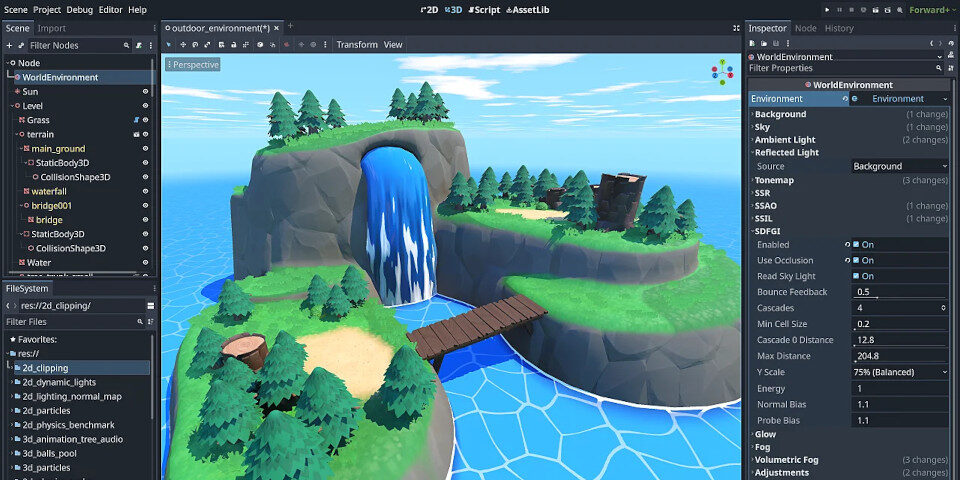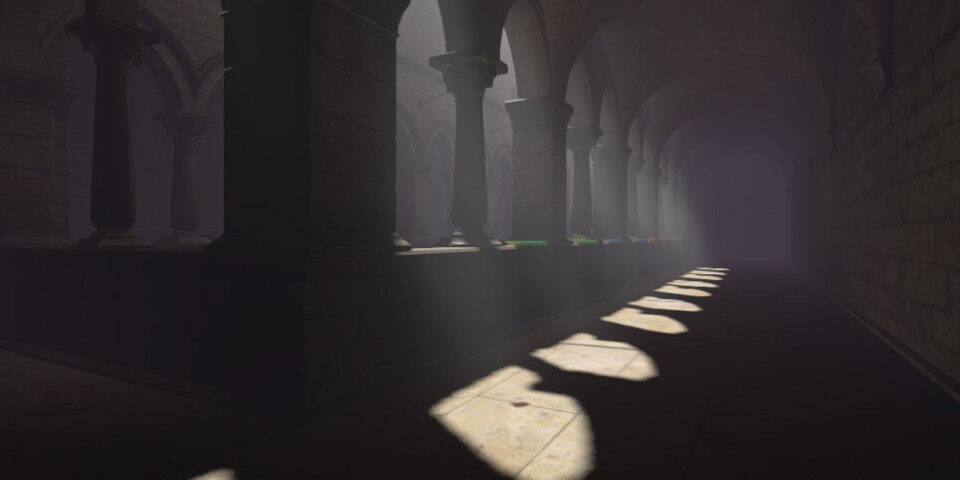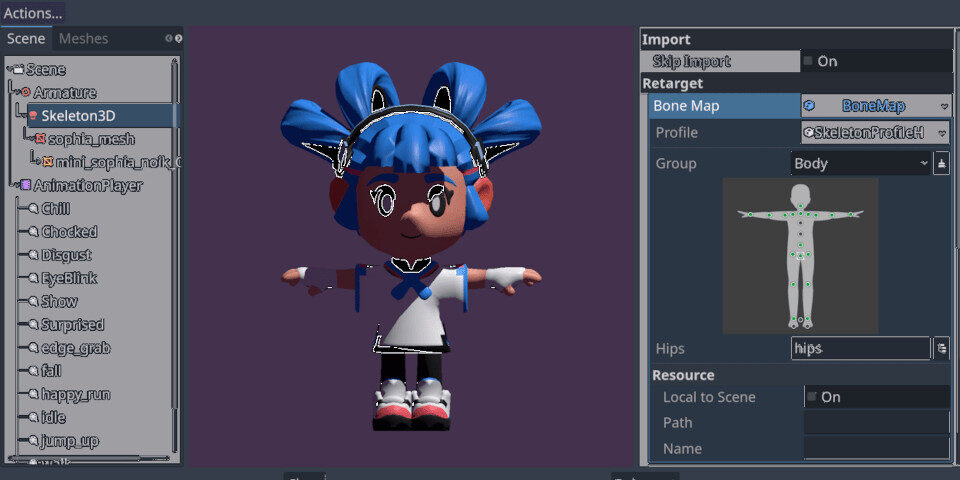Godot 4.0 ships
The Godot team has released Godot 4.0, the next major version of the open-source game engine.
The long-awaited release makes changes throughout the engine, reworking the scripting, networking, audio and UI design toolsets, improving UX in the Godot Editor, and extending platform support.
Key changes for artists include a new Vulkan rendering backend, new real-time global illumination solutions, a volumetric fog system, and updates to the simulation and character animation toolsets.
A powerful open-source alternative to Unity for 2D and 3D titles
Originally created by Argentinian game developer Okam Studio, and open-sourced in 2014, Godot provides an alternative to commercial engines like Unity for desktop, console and mobile games, both 2D and 3D.
Godot 4.0 is the biggest update to the engine since 2018, and has been rescheduled several times, with some of its planned features backported to the 3.x releases.
It’s also a compatibility-breaking update, so Godot 3.x will continue to be supported via a Long-Term Support (LTS) release, the upcoming Godot 3.6, to which more features and bugfixes will be backported.
You can find a complete list of changes via the link at the end of this story, but below, we’ve picked out five highlights for artists as opposed to coders, including updates to lighting, rendering, VFX and animation.

1. New Vulkan rendering backend
One of the biggest visual changes in Godot 4.0 – and one of the key reasons that the release is not backwards-compatible – is the new rendering backend based on the open-source Vulkan graphics API.
The new backend (or strictly, backends: there are separate versions for desktop and mobile) was one of the first features planned for Godot 4.0, due to problems with the OpenGL ES 3.0 backend in Godot 3.0.
Along with Open 3D Engine, Godot is one of the earlier adopters of Vulkan for real-time rendering, although the API is now starting to be used in DCC tools including ArmorPaint, NeXus and ZBrush.
Vulkan is also supported in FSR (FidelityFX Super Resolution), AMD’s open-source render upscaling system, which Godot 4.0 uses to improve in-game frame rates.
2. Better lighting and shadows
Godot 4.0 also features a number of structural changes to improve the quality of the lighting and shadows that the engine can display, including two new real-time global illumination solutions: SDFGI and VoxelGI.
A new system based on Signed Distance Fields, SDFGI needs little set-up and scales well to large worlds.
It’s the slowest of Godot’s GI systems, but should still perform well on most desktop GPUs: it was developed using a test system running a GeForce GTX 1060, now three generations behind Nvidia’s current cards.
VoxelGI needs more set-up – it requires pre-baking, so it’s intended for small-to-medium-sized environments – and suffers more from light leaks through geometry, but it’s faster, and supports emissive materials fully.
Both SDFGI and VoxelGI can be augmented by Screen-space Indirect Lighting, which can be used to enhance dark areas of a game level by adding additional short-range lighting as a post process.
The quality of shadow rendering has also been greatly improved in Godot 4.0, as you can see from this thorough comparison video recorded Godot training provider GDQuest.
For mobile games, or titles where dynamic lighting and shadows would be too much of a performance hit, Godot supports lightmap baking – now possible on the GPU as well as the CPU in Godot 4.0.

3. Volumetric fog and custom sky shaders
The update also introduces a new volumetric fog system, which enables environment fog to interact with scene lighting – including both SDFGI and VoxelGI – to create effects like god rays.
Volumetric fog can be applied globally, or to FogVolumes – defined regions within a level – with the option to adjust density, falloff and scattering properties.
Other new environment effects include a sky shader system, intended for creating sky backgrounds not possible with Godot’s readymade sky materials, like deep-space environments.
4. Revamped native physics engine
Godot’s 3D physics system has also been overhauled, with the open-source Bullet physics framework superseded by a revamped version of the in-house Godot Physics engine.
Godot Physics now supports the same set of features as Bullet physics, including soft bodies, clothing and heightmap-based collision with terrain.
According to the Godot team, the changes improve simulation speed and stability, with the in-house engine also providing “more flexibility when implementing new features”.

5. Improved animation workflow
Animators also get a number of performance and workflow improvements in Godot 4.0.
Key changes include a new animation library system, intended to make it easier to reuse animations between projects, a new animation retargeting system, and improvements to animation blending.
The Animation Editor itself now supports blendshape tracks, and animation curve editing workflow has been improved, with the option to select and edit multiple curves simultaneously, and to hide individual curves.
And there’s (much) more
Other artist-friendly changes in Godot 4.0 include a new Decal node for projecting textures onto meshes; faster, multi-threaded texture import; and updates to the 2D level editing and rendering toolsets.
At the time of writing, the online documentation is still being updated, but you can find an overview of all of the key changes in the blog post linked at the foot of this story.
Availability and system requirements
Godot 4.0 is available under the MIT licence for 32-bit and 64-bit Windows, and 64-bit Linux and macOS. There are also browser-based and Android ports of the Godot Editor.
Read a full list of new features in Godot 4.0 on the Godot team’s blog
